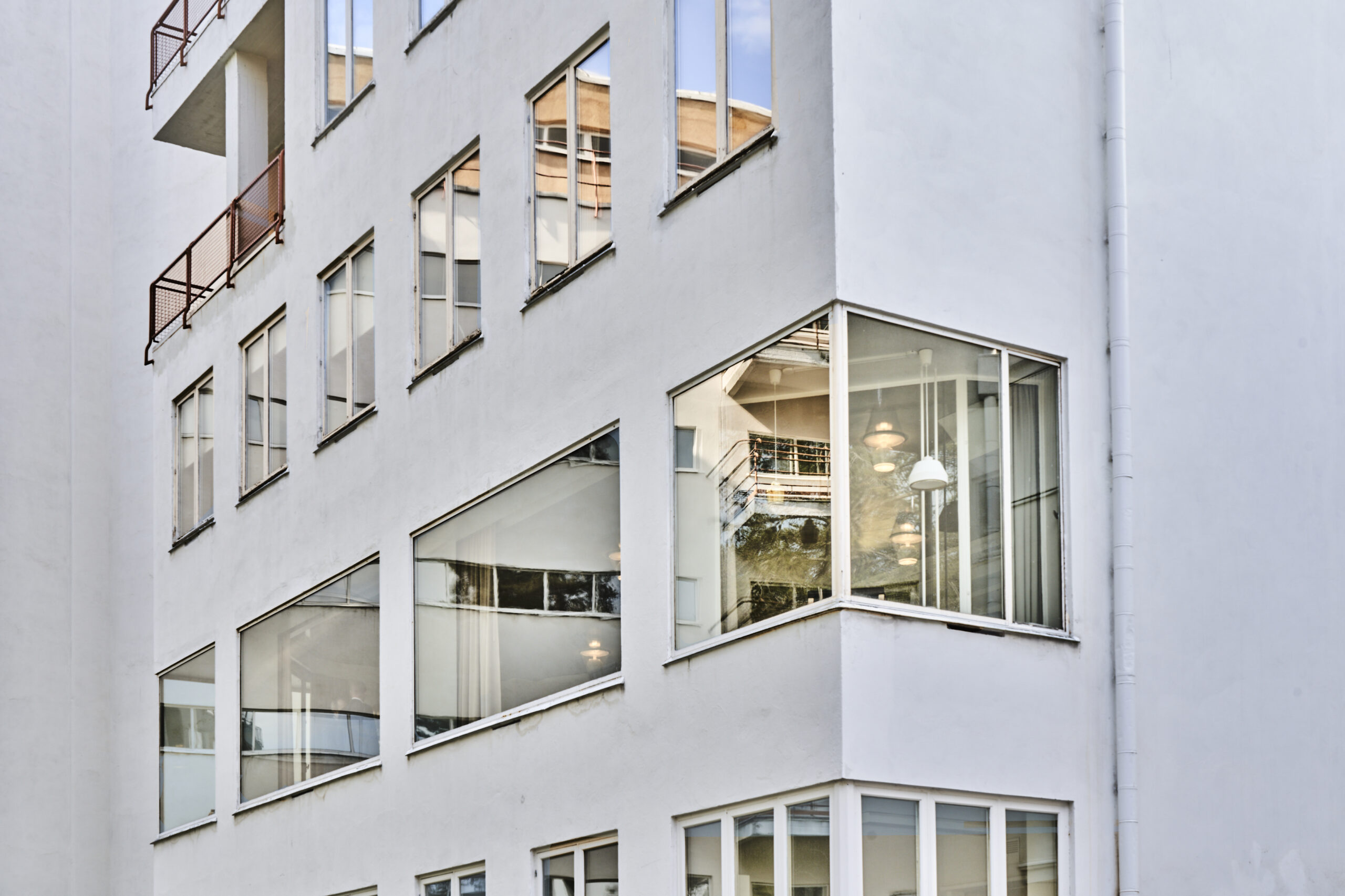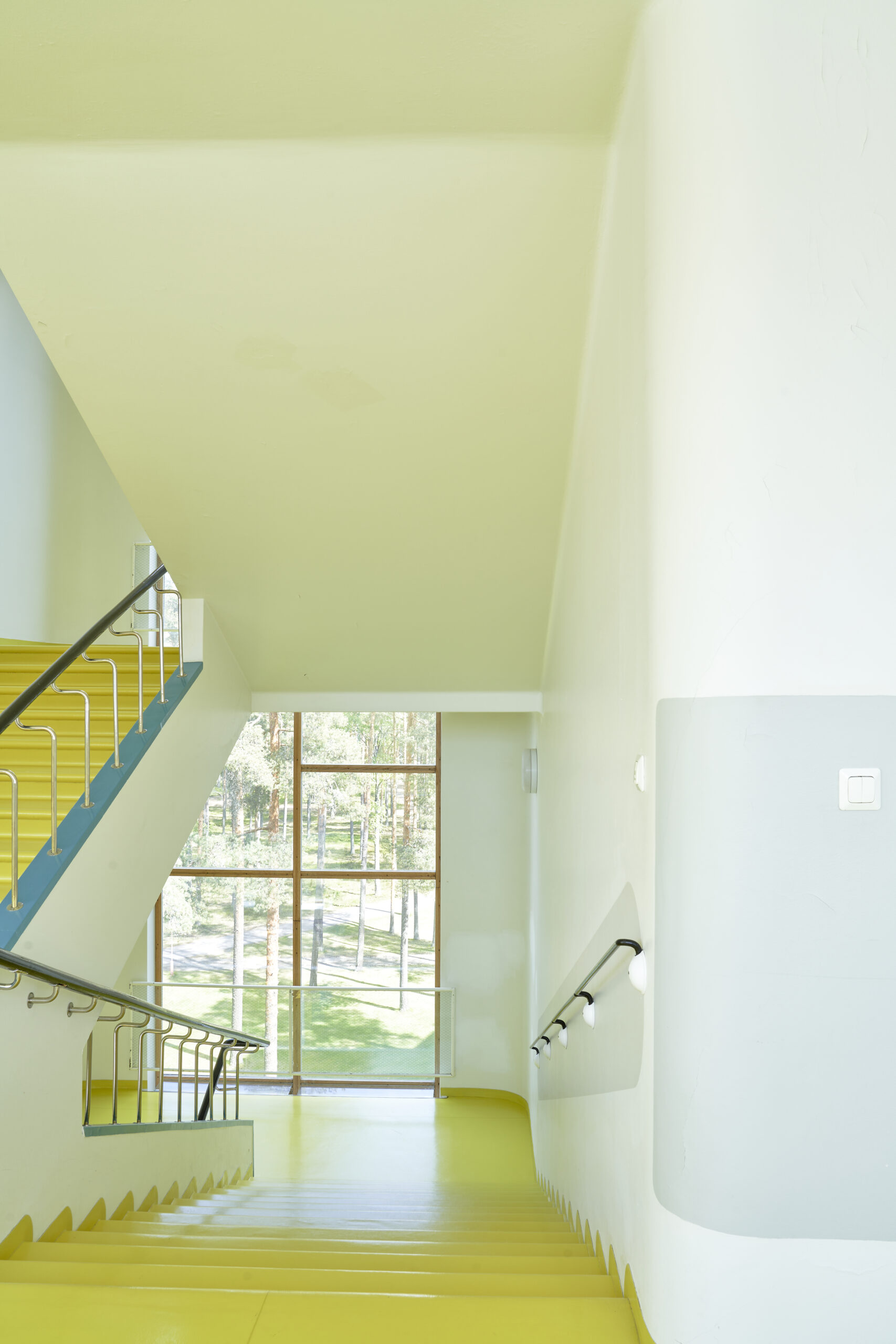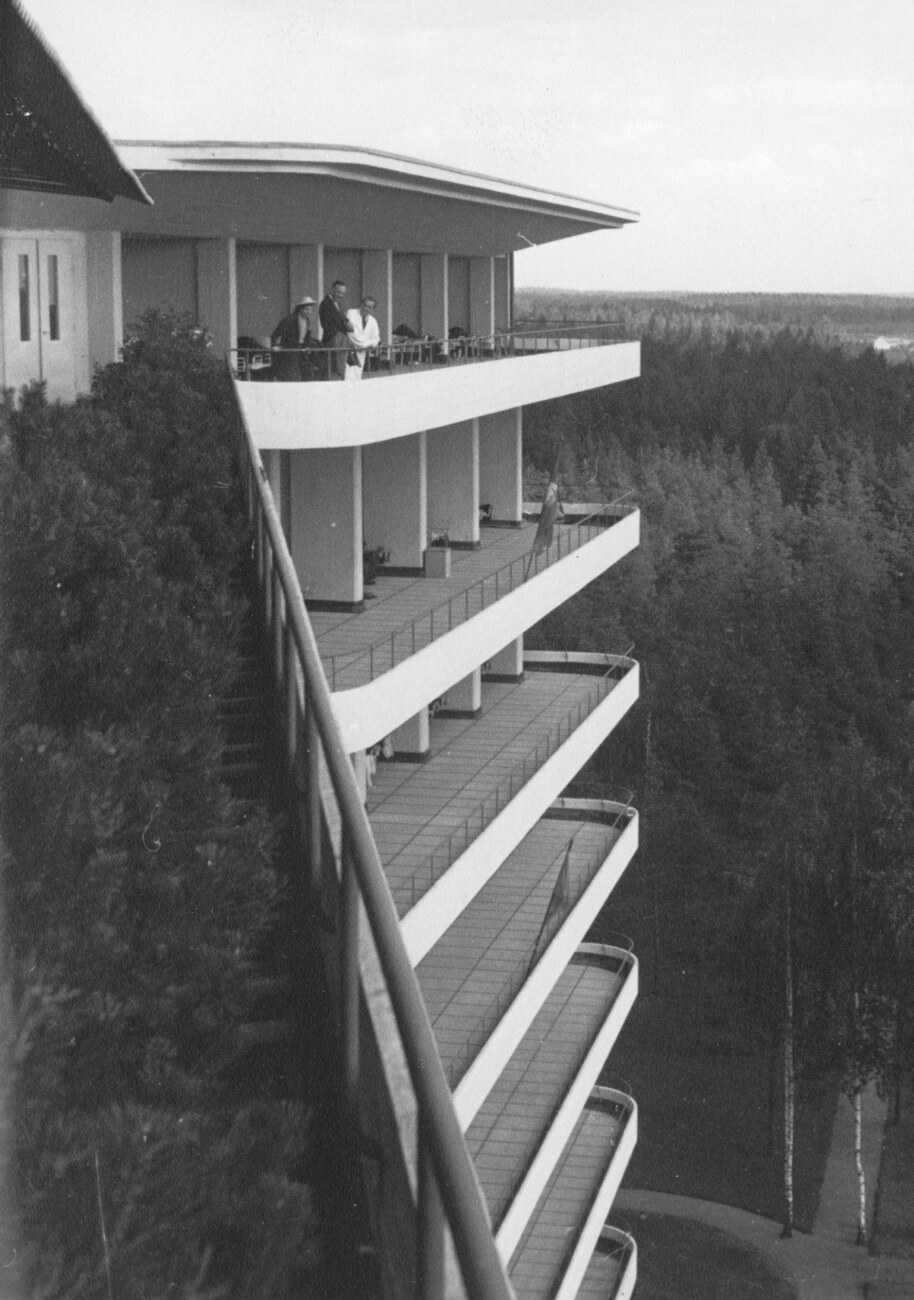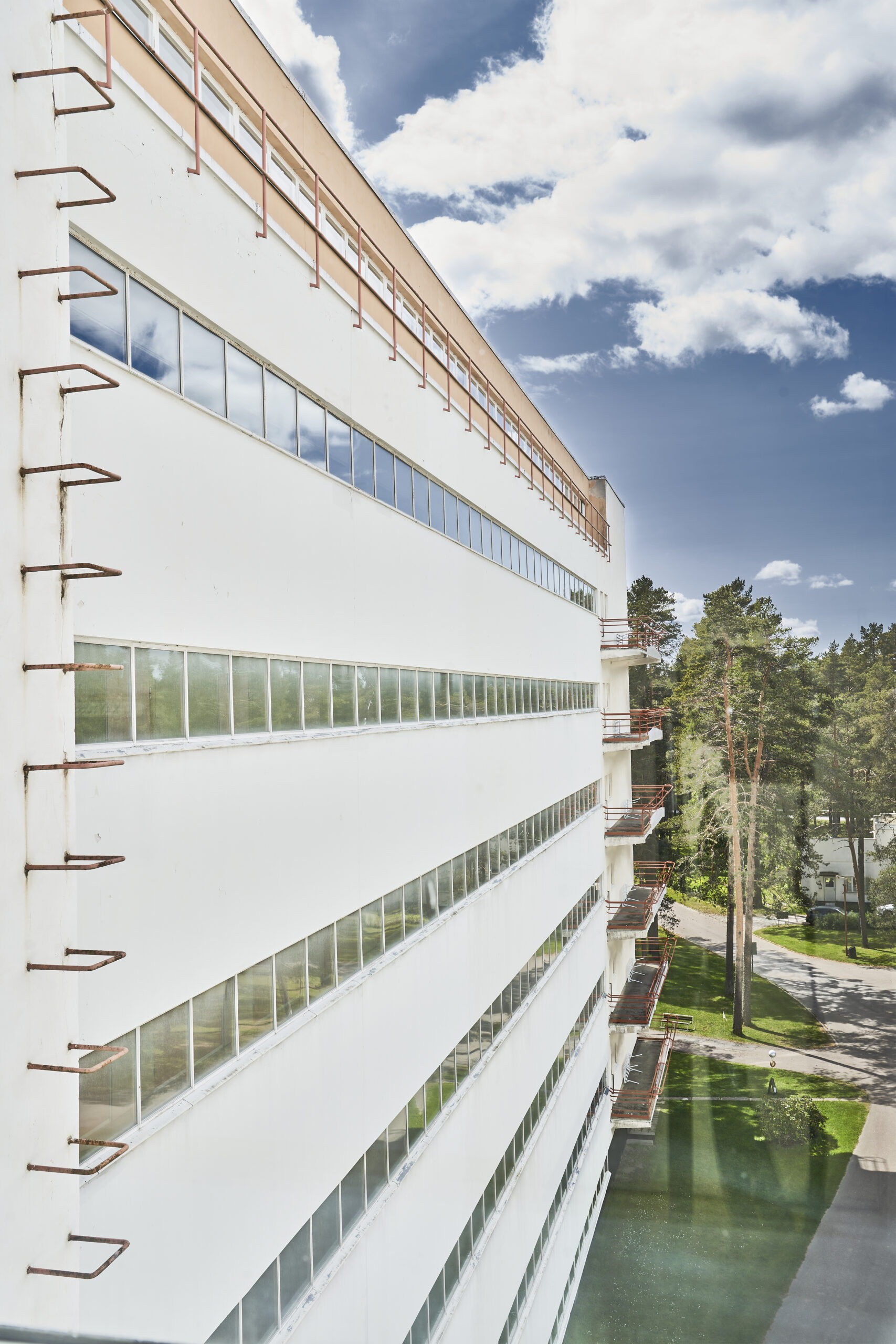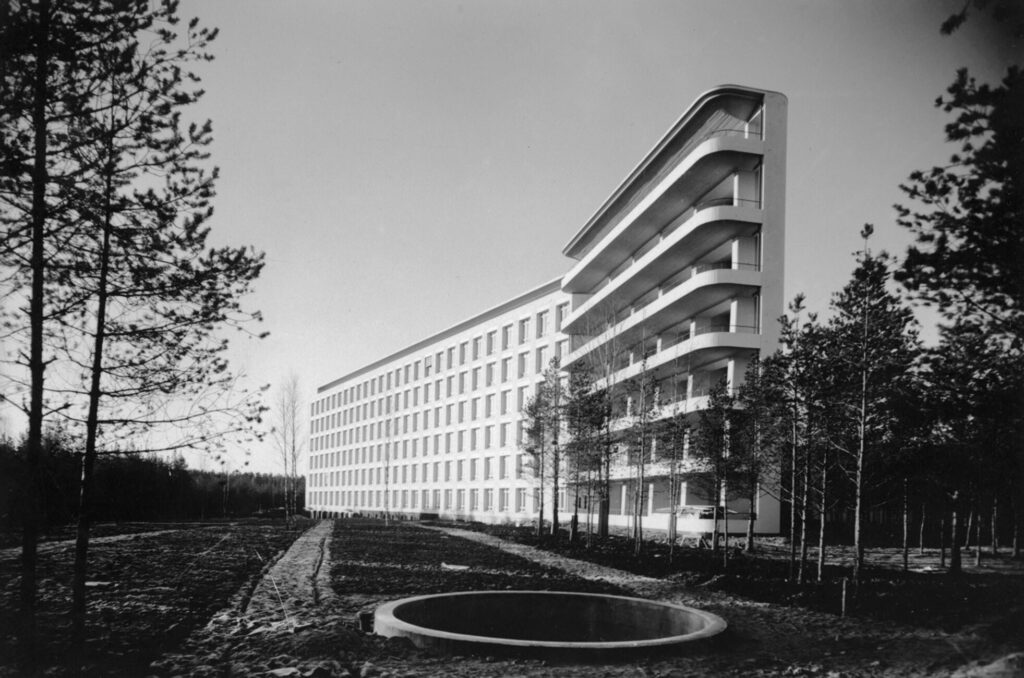Paimio Sanatorium Manifesto
Paimio Sanatorium is a manifesto in itself.
It’s a radical synthesis of architecture, nature and research and it is as relevant today as it was when it was born.
It was a place to breathe. Now it is a place to breathe, reflect and regenerate with an ambitious program of conferences, residencies, exhibitions and workshops.
Paimio Sanatorium brings together thinkers and doers, makers and visionaries to collaboratively build unexpected ways to answer questions through radical, practice-based solutions.
Our credo is written in Manifesto.
Reclaiming the Practice of Taking Care
Paimio Sanatorium, designed by Aino and Alvar Aalto in 1929 and completed in 1933 as a tuberculosis hospital, is a global landmark of functionalist architecture. The sanatorium, based on the Aalto’s winning design for a January 1929 competition, is an exceptional and holistic work of art, focused on the healing properties of architecture and its relationship with the human body. Active as a clinic until the 1960s, it was later gradually transformed into a general hospital, and finally decommissioned in the mid-2010s.
In 2020, the Paimio Sanatorium Foundation was established with the mission of preserving, extending and passing on the brave and progressive vision of the Aaltos to future generations. The following is an outline of the leadership’s vision for Paimio’s future— its role, responsibilities and purpose in the world.
Paimio Sanatorium is much more than a masterpiece of Modernism. It is a place where we can find perspective: both to ourselves and our relationship with the world. At the core of Alvar and Aino Aalto’s design ethos lies a deep empathy for the human condition The Aaltos wanted to use architecture to bring nature and humanity closer to each other, and closer to ourselves.
Paimio Sanatorium was conceived to be the most advanced and forward-looking medical instrument of its time. A radical collaboration between architects, master craftsmen, medical researchers and forces of nature, the project was a creative leap which, though architecture, breathed hope into one the most devastating crises of the 20th century, providing access to care for all regardless of status or origin.
Although the tuberculosis crisis is behind us, this does not mean that the Aalto’s radical synthesis of architecture, nature and research is no longer needed. At a moment of existential crisis, in which the future of our species is at stake, their vision is more relevant today than ever before.
The Architecture of Breathing
In an age of sensorial, cognitive and informational overload, Paimio Sanatorium’s role will be as much about filtering out as about compiling together, with the objective of rediscovering, through architecture, the fundamental rhythm of life. In the Aalto’s vision, the most fundamental existential practice was the act of breathing, and it was around this simple gesture, usually forgotten, that the entire site is organised – from the vast roof terraces all the way down to the single items of furniture.
We intend to continue the Aalto’s work at the Sanatorium by creating a place ofregeneration for our times: a place to look for and find answers. A place for new kinds of wisdom to emerge, for strong ties and sharing our experiences and knowledge. To do this, we intend to start – as the Aaltos did – from the cardinal act of breathing.
A platform for thinking, learning, doing
The Sanatorium will be a place for breathing in a literal sense, giving those in search of new directions an opportunity to suspend the velocity-oriented pace of day-to-day production. But it will also be a place to rediscover and re-approach the fundamental cycles of nature.
We see the future of the site as a unique and uniquely powerful instrument for the development of strategies and solutions on a societal scale. Its past may be associated with healing in a strictly medical sense, but today it presents equally valuable possibilities as a scale that transcends individual treatment and looks towards the relationship between individuals, communities and societies. It is a place, in other words, where design itselfcould find a new vocation and a new calling in the world.
Put differently, we see the Paimio Sanatorium not a passive site, but a place of active solution-seeking and solution-making. It will bring together thinkers and doers, makers and visionaries to collaboratively build brave, unexpected ways to answer questions through radical, practice-based solutions.
Our intention is for the Sanatorium to become known as a place that generates new and radical approaches to how we humans relate to the world and to each other.
The Heritage of all Humanity
Tasked with taking care of this exceptional site, we see our role not only as agents of preservation: the Sanatorium must become a platform of development, learning and exchange that promotes the urgently-needed skills of taking care through design of which the Aaltos were an emblem.
We intend to build with optimism on the Aalto’s heritage of future-making, adding to it the knowledge, the networks and the advocacy of today. We see our role as makers but also translators – custodians of a message of care and generosity written in architecture. For that message to be understood in the present, we must find new languages to express it.
We didn’t just inherit a masterpiece. We inherited a masterclass in designing our shared future. The same principles that guided the Aaltos are more poignant than ever in moving from healing humans to healing societies of today and the future.
The Spirit of Paimio
It is with these goals in mind that we launch the Spirit of Paimio, a series of intergenerational and interdisciplinary moments of reflection on architecture’s role in “taking care” in the societies of today. More than conferences in the traditional sense, we see Spirit of Paimio as a network of synchronous and asynchronous moments of exchange – a community whose influence and utility will increase as it expands over time, according to the principles of Robert Metcalfe. We aim for a nonlinear, non-hierarchical perspective on knowledge – to go beyond the boundaries of disciplines and to overcome territorial fears.
Each annual cycle of the Spirit of Paimio sessions will investigate a specific topic and angle. For the first, we propose a collective philosophical and material investigation of the concept of Design without Depletion.

